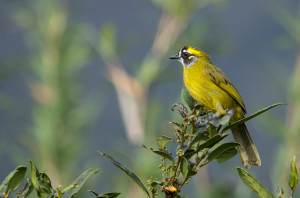In order to conserve biodiversity we need to understand how it changes from place to place. Species composition change from a mountain base to its peak (altitudinal turnover) is striking and well known. But, with the ongoing loss of approximately 1% of natural habitat per year, it is important to understand if such striking patterns persist in human-modified habitats. We compared altitudinal turnover of birds in three habitats (protected forests, forest buffers, and agriculture) in Sri Lanka, an island country that has lost 95% of its original rainforest cover.
We found that altitudinal turnover was significantly greater in forests than in buffer or agricultural areas. All 14 threatened diurnal endemic Sri Lankan birds preferred rainforests. Among which, five species preferred high elevation forests (>1500 m). If we account for a 2oC increase in temperature due to climate change, suitable environment for these high elevation endemics may shift upwards an other 400 m. Such a change may reduce the potential forest habitat availability to a mere 152 sq. km, for the whole of Sri Lanka. These results underscore the importance of protected reserves for reducing both habitat and climate change impacts on biodiversity, particularly on tropical mountains that show extraordinary levels of endemism.
by Sreekar Rachakonda
Read the whole paper published in Biology Letters.



